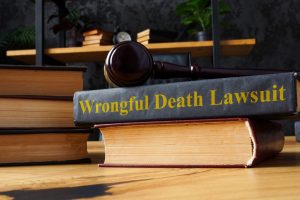
Understanding Wrongful Death Claims
In New York, a wrongful death is defined as any death caused by a “wrongful act, neglect or default.”
A wrongful death lawsuit can typically only be filed if the deceased person, or decedent, would have had legal cause to initiate a personal injury claim against the at-fault party had the victim survived. However, since a deceased person cannot represent themselves in court, any request for compensation must be made on behalf of their estate.
Every state has its own laws detailing who has the right, or standing, to file a wrongful death claim. In New York, only the executor of the decedent’s estate may open wrongful death proceedings. If the deceased person did not nominate an executor in their will, then a surrogate’s court must appoint one before a wrongful death lawsuit can be filed.
Filing a Wrongful Death Lawsuit
Filing, and winning a wrongful death lawsuit requires that the executor—or their attorney—establish that the at-fault party’s negligence caused the deceased person’s death.
In most cases, a wrongful death claim must prove the following:
- The at-fault driver acted negligently;
- The at-fault driver’s negligence was the caused of the victim’s death;
- The deceased person is survived by a spouse, a child, a dependent, or other estate beneficiaries; and
- The surviving beneficiary, or beneficiaries, suffered significant financial harm as a result of the at-fault driver’s negligence and the victim’s death.
Although the elements of a wrongful death lawsuit are similar to those of a personal injury claim, the types of damages that may be awarded to the estate are somewhat more limited.
Your Potential Damages In A New York Wrongful Death Lawsuit
New York’s wrongful death laws permit the recovery of the following types of damages:
Economic Damages
Economic damages are compensation for verifiable and anticipated financial losses.
Examples of economic damages recoverable in a New York wrongful death lawsuit include the following:
- Any outstanding medical bills incurred by the victim between the date of injury and the date of death;
- The costs of funerary, burial, and cremation services;
- The value of the victim’s lost income and wages;
- Reductions in any potential inheritance the victim would have been expected to leave; and
- Loss of certain services provided by the decedent.
Pain and Suffering Of The Deceased
Non-economic damages are intended to compensate for less-tangible and comparably subjective losses. In a wrongful death lawsuit, these could include any of the following:
- The victim’s physical pain and suffering between the date of injury and death; and
- The victim’s emotional pain and suffering between the date of injury and death.
Unlike many other states, New York does not currently allow survivors to recover compensation for their own mental anguish or emotional pain and suffering.
Nonetheless, the combined total of economic and non-economic damages—which could include repayment of the decedent’s medical costs, funeral-related fees, and any income they would have been expected to earn had they survived—is often significant, giving families a chance to retain and re-establish their financial independence after suffering the unthinkable.
